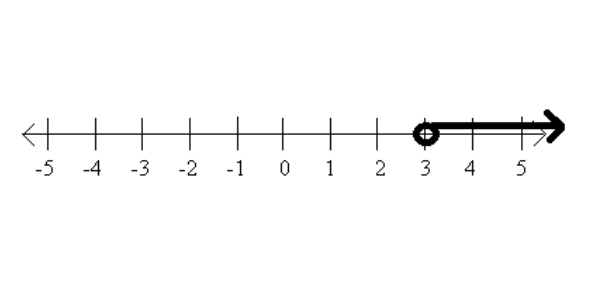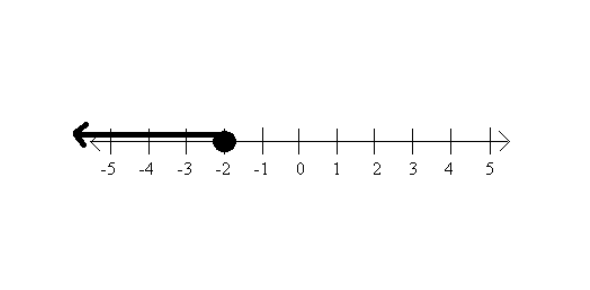Equations And Inequalities Quiz Questions And Answers
(68).jpg)
Have you practiced inequalities well during mathematics class? Take this quiz on equations and inequalities with questions and answers to test your knowledge. We have got some basic questions on equations as well as inequalities for your practice. Start the quiz, and see how well you perform with the final scores. All the best! Try to get a perfect score on this quiz. You can share the quiz with others and challenge them to see who scores better on this algebra quiz.
- 1.
Solve for x: -6x = 36
- A.
X = 6
- B.
X = -6
- C.
X = 30
- D.
X = 42
Correct Answer
B. X = -6Explanation
The equation -6x = 36 can be solved by dividing both sides of the equation by -6. This gives us x = -6, which is the correct answer.Rate this question:
-
- 2.
Solve for y:y - 5 = 12
- A.
Y = 7
- B.
Y = -7
- C.
Y = 17
- D.
Y = -17
Correct Answer
C. Y = 17Explanation
By solving the equation y - 5 = 12, we can isolate the variable y. Adding 5 to both sides of the equation, we get y = 17. Therefore, the correct answer is y = 17.Rate this question:
-
- 3.
Solve for g:2g + 1 = 13
- A.
G = 6
- B.
G = 7
- C.
G = 9
- D.
G = 5
Correct Answer
A. G = 6Explanation
To solve the equation 2g + 1 = 13, we need to isolate the variable g. First, we subtract 1 from both sides of the equation to get 2g = 12. Then, we divide both sides by 2 to get g = 6. Therefore, the correct answer is g = 6.Rate this question:
-
- 4.
Solve for k:-3k - 2 = 10
- A.
K = 4
- B.
K = -3
- C.
K = -4
- D.
K = 3
Correct Answer
C. K = -4Explanation
To solve the equation -3k - 2 = 10, we need to isolate the variable k. First, we can add 2 to both sides of the equation to get -3k = 12. Then, divide both sides by -3 to solve for k. This gives us k = -4, which is the correct answer.Rate this question:
-
- 5.
Check all of the answers that are showing inequalities:
- A.
X = 1
- B.
X < 5
- C.
7 > k
- D.
-2 ≥ u
- E.
8 = w
- F.
F ≤ -2
- G.
H = -1
Correct Answer(s)
B. X < 5
C. 7 > k
D. -2 ≥ u
F. F ≤ -2Explanation
The correct answer includes all the options that are showing inequalities. The options "x < 5", "7 > k", "-2 ≥ u", and "f ≤ -2" all represent inequalities. These options indicate that x is less than 5, 7 is greater than k, -2 is greater than or equal to u, and f is less than or equal to -2. Therefore, these options are the correct answers as they satisfy the condition of showing inequalities.Rate this question:
-
- 6.
An inequality means that the variable can only be one number. For example, x can only be 6.
- A.
True
- B.
False
Correct Answer
B. FalseExplanation
An inequality does not mean that the variable can only be one number. Instead, it means that the variable can take on a range of values that satisfy the given condition. In the example given, x can be any number less than or equal to 6, not just the number 6 itself. Therefore, the statement is false.Rate this question:
-
- 7.
Solve this inequality:7y < 14
- A.
Y < -2
- B.
Y < 2
- C.
Y > 2
- D.
Y > -2
Correct Answer
B. Y < 2Explanation
The inequality 7y < 14 can be solved by dividing both sides of the inequality by 7, which gives y < 2. This means that any value of y that is less than 2 will satisfy the inequality.Rate this question:
-
- 8.
Solve this inequality:g - 5 ≤ 2
- A.
G ≤ -3
- B.
G < -3
- C.
G < 7
- D.
G ≤ 7
Correct Answer
D. G ≤ 7Explanation
The given inequality is g - 5 ≤ 2. To solve for g, we can add 5 to both sides of the inequality to isolate g. This gives us g ≤ 7, which means that g is less than or equal to 7. Therefore, the correct answer is g ≤ 7.Rate this question:
-
- 9.
Solve for d:6d - 1 > 17
- A.
D > -3
- B.
D < 3
- C.
D > 3
- D.
D < -3
Correct Answer
C. D > 3Explanation
The given inequality is 6d - 1 > 17. To solve for d, we need to isolate the variable. Adding 1 to both sides of the inequality gives us 6d > 18. Dividing both sides by 6, we get d > 3. Therefore, the correct answer is d > 3.Rate this question:
-
- 10.
Solve for x:-2x + 6 ≤ 20
- A.
X ≥ -7
- B.
X ≥ 7
- C.
X ≤ -7
- D.
X ≤ 7
Correct Answer
A. X ≥ -7Explanation
The given inequality is -2x + 6 ≤ 20. To solve for x, we need to isolate the variable on one side of the inequality. Subtracting 6 from both sides, we get -2x ≤ 14. Dividing both sides by -2, we have x ≥ -7. Therefore, the correct answer is x ≥ -7.Rate this question:
-
- 11.
Check all of the "clue words" that mean multiply:
- A.
Times
- B.
Split equally
- C.
Product
- D.
Less than
Correct Answer(s)
A. Times
C. ProductExplanation
The clue words "times" and "product" both indicate multiplication. "Times" is a common word used to denote multiplication, while "product" refers to the result of multiplying two or more numbers together. Therefore, selecting "times" and "product" as the clue words that mean multiply is correct.Rate this question:
-
- 12.
Write an algebraic expression for: The product of 6 and y
Correct Answer(s)
6xy
6 xy
6x y
6 x y
6yExplanation
The correct answer is 6y. This is because the question asks for the product of 6 and y, which can be written as 6y. The other options include unnecessary spaces or extra variables (x) that are not mentioned in the question.Rate this question:
- 13.
Evaluate for x = 2 and y = -1:3x + 2y + x
- A.
= 0
- B.
= 10
- C.
= 6
Correct Answer
C. = 6Explanation
To evaluate the expression for x = 2 and y = -1, we substitute these values into the given expression: 3(2) + 2(-1) + 2. Simplifying this, we get 6 - 2 + 2 = 6. Therefore, the answer is 6.Rate this question:
-
- 14.
Which inequality is represented by this graph:
- A.
X < 3
- B.
X > 3
- C.
X ≥ 3
- D.
X ≤ 3
Correct Answer
B. X > 3Explanation
The graph shows a number line with an open circle at 3 and an arrow pointing to the right. This indicates that the values of x are greater than 3. Therefore, the correct inequality represented by the graph is x > 3.Rate this question:
-
- 15.
Which inequality is represented by this graph:
- A.
X ≤ -2
- B.
X < -2
- C.
X ≥ -2
- D.
X > -2
Correct Answer
A. X ≤ -2Explanation
The graph shows a solid line with a closed dot on -2 on the number line. This indicates that the value of x can equal -2 or any number less than -2. Therefore, the correct inequality that represents the graph is x ≤ -2.Rate this question:
-
Quiz Review Timeline +
Our quizzes are rigorously reviewed, monitored and continuously updated by our expert board to maintain accuracy, relevance, and timeliness.
-
Current Version
-
Feb 22, 2024Quiz Edited by
ProProfs Editorial Team
Expert Reviewed by
Janaisa Harris -
Oct 18, 2010Quiz Created by
Nrosenstein
 Back to top
Back to top




